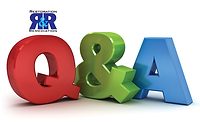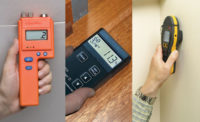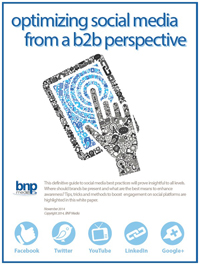On Ultrasonics: The R&R Q&A
Lisa Morantz, Frank Pedeflous and David Mazur weigh in on ultrasonic cleaning










When you think “contents restoration,” one technology that likely comes to mind is ultrasonics. And to give you a better understanding about how ultrasonic cleaning systems can benefit your contents restoration division – as well as some other things they can be used for – we decided to ask three people who know a thing or two about the technology. Here’s a look at what Lisa Morantz (Morantz Ultrasonics), Frank Pedeflous (Omegasonics) and David Mazur (Ultrasonics International Corp.) had to say about ultrasonic cleaning.
Talk about the role ultrasonic cleaning can play for the restoration and/or remediation professional? What types of things can the system adequately clean and how effective can they be cleaned?
Lisa Morantz: Today, most restoration professionals are aware that having an ultrasonic machine is an essential tool for cleaning contents. Ultrasonics can clean contents between 100% - 500% faster than hand cleaning, clean more effectively without residual issues that come with hand cleaning and clean items that were previously considered a loss. As more insurance companies are looking for ways to save money and remain impressive and relevant to their clients, they have recognized that content restoration is one way to do this. They are beginning to seek out those companies that have invested in the latest technology to provide a professional contents cleaning service, resulting in the contractor receiving more jobs and more profit.
The range of items that can be cleaned with ultrasonics is far greater than what can be accomplished by hand. Standard bric-a-brac and collectibles are where you hear most people boast about ultrasonics due to the intricate nature of many of these items. Small crevices, holes and other hard-to-clean niches become a nightmare even for the best hand cleaner armed with Q-tips and chemical. What can take 20 minutes or more by hand will be done within mere seconds, and usually without residual odor, breakage or other secondary issues. Other items you can clean ultrasonically include electric and electronic devices, window blinds of almost every type, leather items such as golf bags, horse saddles, leather jackets, etc., stuffed animals, metals and jewelry and much more. A bonus for the restoration contractor is that their own cleaning equipment such as blowers and tools can also be maintained easily and quickly in an ultrasonic machine.
Frank Pedeflous: With the advent of ultrasonic and electronic cleaning systems, our research data shows that 70% of all boxed items can go through these systems and be restored to pre-loss condition or better. This eliminates a large portion of hand cleaning from fire and water damage jobs. With the use of ultrasonic systems, cleaning efficiencies can be increased up to five times resulting in significant labor savings to restoration contractors. The advanced cleaning ability lowers total loss items in excess of 50%.
Most electronic items, appliances, game systems, cookware, figurines, antiques and collectibles can all be processed with this technology. Items that must still be cleaned by hand are books, furniture, documents, photos and wooden picture frames.
David Mazur: Ultrasonic cleaners were introduced to the restoration industry in the early 90s. Although their use was somewhat limited in the beginning, their popularity grew steadily. Over time, ultrasonic cleaners have become more sophisticated. Cleaning results, however, are still dependent upon thoroughly understanding the capabilities of the machinery. In recent years, training and education specific to contents restoration has taken a giant leap forward in enabling restorers with ultrasonic capabilities to deliver cleaning quality consistency and faster turnaround.
A wide variety of material types can be successfully restored using ultrasonics. Content items made of glass, ceramics, plastics, synthetics and metals are routinely addressed. Ultrasonics are often called upon to restore delicate and fragile items, particularly those with hidden passageways and inaccessible areas. Complex items of intricate detail that could not be restored via traditional methods can be routinely recovered using ultrasonic technology.
There is no doubt that ultrasonics has proven to be the ideal cleaning method for contents restoration and companies who have learned to maximize this technology are better equipped to deal with the complexities of a typical packout.
What about other practical uses of ultrasonic cleaning? Might any aspect of this technology surprise the restoration professional?
LM: Restoration professionals are usually surprised to learn that Morantz Ultrasonic Machines can clean contents from a Category 3 loss (aka black water). Our systems are the only ones that have been independently laboratory tested and verified to destroy all infectious biological contaminants. Accordingly, they can also be used to clean any bacterial, fungal or viral contamination. It is the action created by our digital frequency generator which causes these biological contaminants to be obliterated and neutralized during cleaning. There is no cross contamination between items being cleaned. This leaves the contractor open to other revenue sources, such as cleaning privacy curtains, blinds, wheelchairs, commodes and more in a medical setting. Hospitals are desperate for ways to control the spread of infection. This is a great way to diversify and profit.
FP: Rusty tools from garage fires can be restored to better than pre-loss condition. The use of the equipment in factory floods and fires is on the increase. Our equipment has been used in candy factories and aerospace manufacturing plants to restore machinery. Schools and offices have had large blocks of computers and monitors restored after disasters.
DM: Ultrasonic cleaning is also widely used in the industrial sector, medical field, jewelry and optical businesses, microchip industry and countless other areas. Virtually anywhere that precision cleaning is required, ultrasonics is the first choice. Many restoration companies have been able to utilize their capabilities to tap into other markets other than restoration.
Virtually any factory, or rebuilding of a facility for example, employs some sort of cleaning process. In many cases, parts cleaning is performed in-house utilizing manual methods and volatile chemistries. Ultrasonic cleaning can be viable to the company’s problems and an extra source of revenue for the restoration contractor.
The key to landing this business is delivering a better cleaning process at a lower cost. Companies utilizing hand cleaning methods achieve average cleaning results at best and incur extra labor costs, chemical costs and possible dollars lost due to slow turnaround times. Providing an ultrasonic cleaning solution provides the customer with a premier level of service and can dramatically decrease the cost of cleaning versus current in-house procedures.
Charging for this service is typically billed via two methods:
- By the hour: In order to determine an appropriate hourly rate for cleaning services all factors must be considered - pickup and delivery charges, chemical and rinse agent costs, ultrasonic technician costs and additional labor and an hourly or daily equipment charge.
- By the piece or part: Cleaning by the piece or part is the preferred method and usually best suits the customer’s needs because it provides an exact, or fixed cost per piece or part. To determine a price per part or piece, first determine how many parts can be cleaned in one batch or tank load then determine the number of votes or batches that can be processed within an hour. Divide the number of pieces processed in an hour by the hourly costs of cleaning to determine the price per part or piece.
In many areas of the country, opportunities for custom cleaning can be readily accessed and usually results in a win-win for all parties concerned.
Talk about the future of ultrasonic cleaning equipment, what’s in store? What are some things that future machines may be able to accomplish that they cannot accomplish now?
LM: Ultrasonic cleaning equipment has come a long way in the restoration industry. My father was the first to introduce ultrasonic equipment for contents restoration nearly 30 years ago, and it was difficult at that time to get any contractors to adopt this (or any) technology. As the pioneer, he paved the way for profitability in contents and developed many of the processes and techniques still being used. Today, we live in a different world where most of us carry a computer with us as our communication device. We are used to technology and expect to update our processes frequently as newer technology becomes available. As such, ultrasonic manufacturers are now beginning to offer features that the average contractor would not have been able to grasp all those years ago. These include:
- Variable Frequencies: Most manufacturers will still offer the standard 40kHz system which is appropriate for cleaning the majority of contents. However, if the contractor wants to diversify and take on other types of cleanable items in their business, utilizing lower frequencies (around 27kHz) or higher frequencies (around 80kHz), will allow for cleaning a wider variety of items.
- Digital Ultrasonic Generators: Offering a digital version of the standard analog generator creates an overall more efficient cleaning experience. It allows the contractor to use the entire ultrasonic bath, including the corners of the tank and varying depths. This means that items placed in any location of the tank will receive the same quick and detailed cleaning. Previously this was only accomplished in the “sweet spot” of an analog system, which is the center of the machine.
- Touch Screen Controls: Just as we are now used to our smart phones, ultrasonic machines are now being built with touch screen controls. This takes operator error out of the equation and allows for the machine to perform tasks such as fill itself with water, add the proper amount of cleaning solution, heat to the proper temperature and much more. It also allows the manufacturer to remotely deal with any operation issues and make adjustments if necessary. Pretty cool stuff!
- Operator Safety Features: Ultrasonic machines of the past required the operator to be constantly lifting and bending to place items in the tank and remove them. In our time of workman’s comp claims and the litigious nature of business, lifting devices on equipment has become a natural and necessary add-on. No strain, No pain…No claim. A content lift should be a feature you look for on new equipment.
FP: The technology extends to the commercial world. With competitors springing up more quickly than claims, contractors need to start looking at the huge potential in commercial markets. This includes building electrical maintenance as well as computer workstation service plans.
It is less about the future of ultrasonic cleaning equipment and more to do with the future of the restoration industry. As insurers are becoming more cost conscious, restoration professionals need to have better trained staffs, better systems in place, more rapid methods of documenting inventory and better, faster and more cost-effective ways to clean contents.
Insurers have figured out how to monitor and control costs on construction, drying and emergency services and they are now honing in on contents. Contents divisions not using the newest technologies won’t survive long term.
Is there anything else you would like to share about this technology?
LM: Manufacturers like us strive to present this technology to our clients in its simplest form. It makes utilizing the equipment as easy as possible for the average worker. This means adding on features such as those outlined above (in Question No. 3). Don’t count out these features as just “whistles and bells.” There are legitimate reasons for the implementation of advanced technology, and restoration contractors should strive to integrate the latest and greatest into business for the best results and profitability.
DM: Although most people associate ultrasonics with cleaning, it surprises many to know that this technology is capable of many extraordinary things.
In the hospitals and medical centers, surgeons are routinely using ultrasonic scalpels for cutting without applying the external pressure typically associated with utilizing metal utensils. In the industrial sector, ultrasonics is used to weld two different metals together without the use of solder or flux. Ultrasonics is also used for plastics cutting and welding. The heat generated from ultrasonics while cutting can simultaneously weld the cut pieces back together in the same operation.
The applications for ultrasonics seem limitless. Learning how to harness the benefits of this technology for our industry allows us to be better operators and deliver higher levels of service to customers.
Looking for a reprint of this article?
From high-res PDFs to custom plaques, order your copy today!











